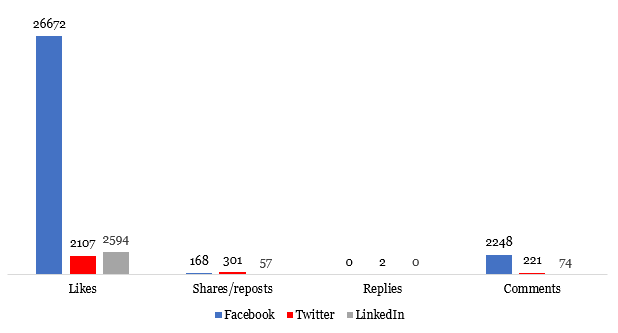
While it’s no secret that visuals often outperform plain text in online spaces, the tricks behind this trend deserve a closer look. Are social media posts with pictures always more popular? And why do some pictures spark more interest than others?
Our latest research at Infoprations, drawing on 2025 data from 128 national and foreign brands, reveals compelling insights about content formats and how they perform across major platforms. Our focus is to help content creators, brand managers, and communication specialists craft smarter, platform-specific strategies.
The analysis shows that while pure image-based content performs better than plain text in general, text-over-image formats consistently outperform both when it comes to likes, comments, and shares. This points to an essential principle in digital communication: people want to understand, connect, and relate quickly.
Register for Tekedia Mini-MBA edition 19 (Feb 9 – May 2, 2026): big discounts for early bird.
Tekedia AI in Business Masterclass opens registrations.
Join Tekedia Capital Syndicate and co-invest in great global startups.
Register for Tekedia AI Lab: From Technical Design to Deployment (next edition begins Jan 24 2026).
In a world overwhelmed with visuals, those that offer some cognitive or emotional value, such as a quick fact, a headline, or a short story, stand out.
Exhibit 1: Average engagement patterns per form of ads

The Visual Advantage – But Not Always
It’s widely acknowledged that image-based ads tend to attract higher engagement than those relying solely on text. Visual content (photos, infographics, videos) has an edge because it instantly captures attention and often conveys emotion or information more quickly than words alone. These types of posts are more likely to be liked, commented on, and shared, contributing to greater organic reach and message recall.
However, not all visual content performs equally. Interestingly, posts that combine text with visuals, such as overlaying short captions or insights on an image, tend to outperform image-only posts. In this regard, our analyst notes that audiences value context, clarity, or storytelling that goes beyond visual appeal. Particularly on platforms like Facebook and LinkedIn, users respond well to content that balances aesthetic appeal with meaningful communication.
Exhibit 2: Average engagement patterns per platform

In our analysis, we found that Facebook remains the king of broad engagement. It’s ideal for building emotional connections and communal awareness, making it a go-to for campaigns that seek to mobilize public sentiment or tell human-centered stories.
Twitter thrives on virality and topicality. Posts here should be concise, punchy, and often tied to trending discussions. It’s the best place for issue amplification, influencer engagement, and sparking real-time conversation. LinkedIn, on the other hand, leans into professional validation. While it has relatively lower engagement depth in terms of likes and shares, it’s a powerful platform for credibility, networking, and thought leadership, especially for niche or technical content.
Strategic Insights
So, what does this mean for your social media strategy? It means you shouldn’t just follow general rules, you need a platform-specific approach. Don’t rely on standalone visuals or long-form text alone. Instead, aim for a hybrid approach: Use strong imagery with text overlays to deliver concise, compelling messages. Save long-form text posts for insights or storytelling that require context.
Harnessing each platform’s strengths is important. For instance, use Facebook for broad reach and emotional storytelling. It’s the platform for engaging everyday users and mobilizing collective sentiment.
Twitter is good for amplifying issues, tagging influencers, and joining trending conversations. This will ultimately lead to sparkling reactions and shareability. Use LinkedIn to position yourself or your organization as a thought leader. Prioritize professional tone and informative content that demonstrates expertise.
Infoprations’ Understanding Digital Integrated Marketing Communications Team includes Abdulazeez Sikiru Zikirullah, Moshood Sodiq Opeyemi, and Bello Opeyemi Zakariyha



